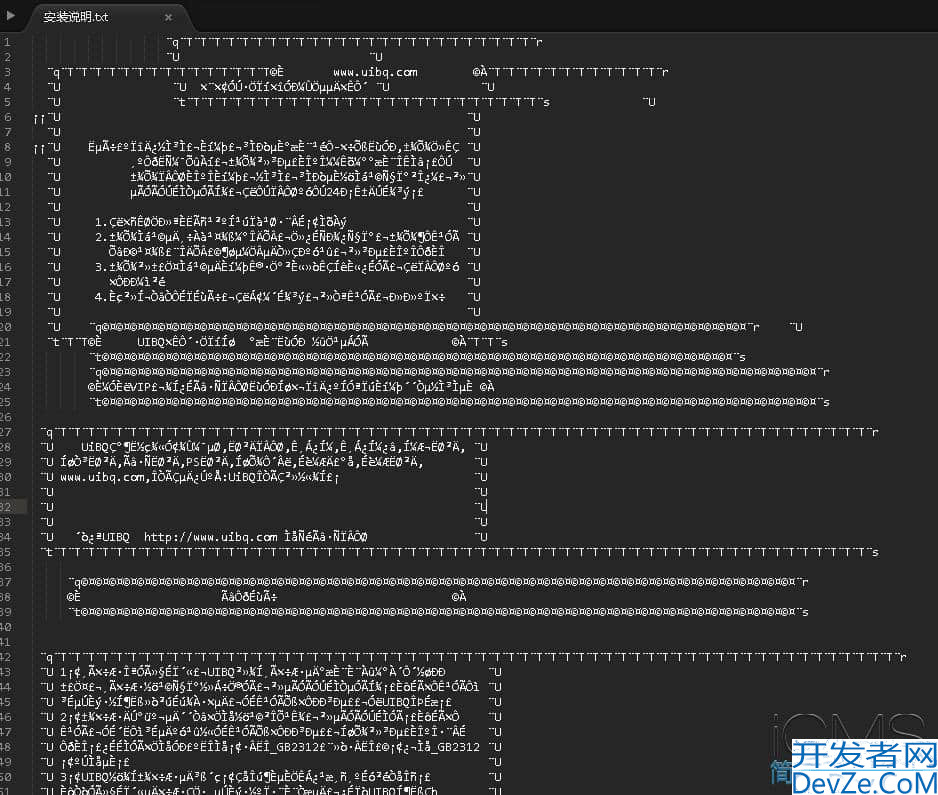Java高效地分割文本文件的方法技巧
目录
- 前言
- 低效常用示例
- 效率分析
- 高效处理方案
- 性能分析
- 结论
前言
之前听到零拷贝的技术,都感觉好高深好遥远呀
都是看什么什么框架用了零拷贝技术,比如netty就使用零拷贝技术。
看到一篇文章让我对接零拷贝技术去魅了,原来我也可以再工作中去使用零拷贝技术,今天把这篇文章分享给大家
低效常用示例
当我们面临将文本文件分成最大大小块的时,我们可能会尝试编写如下代码:
private static final long maxFileSizeBytes = 10 * 1024 * 1024; // 默认10MB
public void split(Path inputFile, Path outputDir) throws IOException {
if (!Files.exists(inputFile)) {
throw new IOException("输入文件不存在: " + inputFile);
}
if (Files.size(inputFile) == 0) {
throw new IOException("输入文件为空: " + inputFile);
}
Files.createDirectories(outputDir);
try (BufferedReader reader = Files.newBufferedReader(inputFile)) {
int fileIndex = 0;
long currentSize = 0;
Bufferedwriter writer = null;
try {
writer = newWriter(outpuhttp://www.devze.comtDir, fileIndex++);
String line;
while ((line = reader.readLine()) != null) {
byte[] lineBytes = (line + System.lineSeparator()).getBytes();
if (currentSize + lineBytes.length > maxFileSizeBytes) {
if (writer != null) {
writer.close();
}
writer = newWriter(outputDir, fileIndex++);
currentSize = 0;
}
writer.write(line);
writer.newLine();
currentSize += lineBytes.length;
}
} finally {
if (writer != null) {
writer.close();
}
}
}
}
private BufferedWriter newWriter(Path dir, int index) throws IOException {
Path filePath = dir.resolve("part_" + index + ".txt");
return Files.newBufferedWriter(filePath);
}
效率分析
此代码在技术上是可以的,但是将大文件拆分为多个块的效率非常低。
它执行许多堆分配 (行),导致创建和丢弃大量临时对象 (字符串、字节数组) 。
还有一个不太明显的问题,它将数据复制到多个缓冲区,并在用户和内核模式之间执行上下文切换。具体如下:
BufferedReader: BufferedReader 的 BufferedReader 中:
- 在底层
FileReader或InputStreamReader上调用read() - 数据从内核空间→用户空间缓冲区复制。
- 然后解析为 Java 字符串(堆分配)。
getBytes() : getBytes() 的
- 将
String转换为新的byte[]更多的堆分配。
BufferedWriter: BufferedWriter 的 BufferedWriter 中:
- 从用户空间获取 byte/char 数据。
- 调用
write()这又涉及将用户空间复制到内核空间。 - 最终刷新到磁盘。
因此,数据在内核和用户空间之间来回移动多次,并产生额外的堆改动。除了垃圾收集压力外,它还具有以下后果:
- 内存带宽浪费在缓冲区之间进行复制。
- 磁盘到磁盘传输的 CPU 利用率较高。
- 操作系统本可直接处理批量拷贝(通过DMA或优化I/O),但Java代码通过引入用户空间逻辑拦截了这种高效性。
高效处理方案
那么,我们如何避免上述问题呢?
答案是尽可能使用 zero copy,即尽可能避免离开 kernel 空间。这可以通过使用 FileChannel 方法 long transferTo(long position, long count, WritableByteChannel target) 在 java 中完成。它直接是磁盘到磁盘的传输,还会利用作系统的一些 IO 优化。
有问题就是所描述的方法对字节块进行作,可能会破坏行的完整性。为了解决这个问题,我们需要一种策略来确保即使通过移动字节段处理文件时,行也保持完整
没有上述的问题就很容易,只需为每个块调用
transferTo,将position递增为position = position + maxFileSize,直到无法传输更多数据。
为了保持行的完整性,我们需要确定每个字节块中最后一个完整行的结尾。为此,我们首先查找 chunk 的预期末尾,然后向后扫描以找到前面的换行符。这将为我们提供 chunk 的准确字节计数,确保包含最后的、不间断的行。这将是执行缓冲区分配和复制的代码的唯一部分,并且由于这些作应该最小,因此预计性能影响可以忽略不计。
private static final int LINE_ENDING_SEARCH_WINDOW = 8 * android1024;
private long maxSizePerFileInBytes;
private Path outputDirectory;
private Path tempDir;
private void split(Path fileToSplit) throws IOException {
try (RandomAccessFile raf = new RandoMACcessFile(fileToSplit.toFile(), "r");
FileChannel inputChannel = raf.getChannel()) {
long fileSize = raf.length();
long position = 0;
int fileCounter = 1;
while (position < fileSize) {
// Calculate end position (try to get close to max size)
long targetEndPosition = Math.min(position + maxSizePerFileInBytes, fileSize);
// If we're not at the end of the file, find the last line ending before max size
long endPosition = targetEndPosition;
if (endPosition < fileSize) {
endPosition = findLastLineEndBeforePosition(raf, position, targetEndPosition);
}
long chunkSize = endPosition - position;
var outputFilePath = tempDir.resolve("_part" + fileCounter);
try (FileOutputStream fos = new FileOutputStream(outputFilePath.toFile());
FileChannel outputChannel = fos.getChannel()) {
inputChannel.transferTo(position, chunkSize, outputChannel);
}
position = endPosition;
fileCounter++;
}
}
}
private long findLastLineEndBeforePosition(RandomAccessFile raf, long startPosition, long maxPosition)
throws IOException {
long originalPosition = raf.getFilePointer();
try {
int bufferSize = LINE_ENDING_SEwww.devze.comARCH_WINDOW;
long chunkSize = maxPosition - startPosition;
if (chunkSize < bufferSize) {
bufferSize = (int) chunkSize;
}
byte[] buffer = new byte[bufferSize];
long searchPos = maxPosition;
while (searchPos > startPosition) {
long distanceToStart = searchPos - startPosition;
int bytesToRead = (int) Math.min(bufferSize, distanceToStart);
long readStartPos = searchPos - bytesToRead;
raf.seek(readStartPos);
int bytesRead = raf.read(buffer, 0, bytesToRead);
if (bytesRead <= 0)
break;
// Search backwards through the buffer for newline
for (int i = bytesRead - 1; i >= 0; i--) {
if (buffer[i] == '\n') {
return readStartPos + i + 1;
}
}
searchPos -= bytesRead;
}
throw new IllegalArgumentException(
"File " + fileToSplit + " cannot be split. No newline found within the limits.");
} finally {
raf.seek(originalPosition);
}
}
findLastLineEndBeforePosition 方法具有某些限制。具体来说,它仅适用于类 Unix 系统 (\n),非常长的行可能会导致大量向后读取迭代,并且包含超过 maxSizePerFileInBytes 的行的文件无法拆分。但是,它非常适合拆分访问日志文件等场景,这些场景通常具有短行和大量条目。
性能分析
理论上,我们zero copy拆分文件应该【常用方式】更快,现在是时候衡量它能有多快了。为此,我为这两个实现运行了一些基准测试,这些是结果。
Benchmark Mode Cnt Score Error Units FileSplitterBenchmark.splitFile avgt 15 1179.429 54.271 ms/op FileSplitterBenchmark.splitFile:gc.alloc.rate avgt 15 1349.613 60.903 MB/sec FileSplitterBenchmark.splitFile:gc.alloc.rate.norm avgt 15 1694927403.481 6060.581 B/op FileSplitterBenchmark.splitFile:gc.count avgt 15 718.000 counts FileSplitterBenchmark.splitFile:gc.time avgt 15 317.000 ms FileSplitterBenchmark.splitFileZeroCopy avgt 15 php 77.352 1.339 ms/op FileSplitterBenchmark.splitFileZeroCopy:gc.alloc.rate avgt 15 23.759 0.465 MB/sec FileSplitterBenchmark.splitFileZeroCopy:gc.alloc.rate.norm avgt 15 2555608.877 8644.153 B/op FileSplitterBenchmark.splitFileZeroCopy:gc.count avgt 15 10.000 counts FileSplitterBenchmark.splitFileZeroCopy:gc.time avgt 15 5.000 ms
以下是用于上述结果的基准测试代码和文件大小(200+MB)。
int maxSizePerFileInBytes = 1024 * 1024 // 1 MB chunks
public void setup() throws Exception {
inputFile = Paths.get("/tmp/large_input.txt");
outphpputDir = Paths.get("/tmp/split_output");
// Create a large file for benchmarking if it doesn't exist
if (!Files.exists(inputFile)) {
try (BufferedWriter writer = Files.newBufferedWriter(inputFile)) {
for (int i = 0; i < 10_000_000; i++) {
writer.write("This is line number " + i);
writer.newLine();
}
}
}
}
public void splitFile() throws Exception {
splitter.split(inputFile, outputDir);
}
public void splitFileZeroCopy() throws Exception {
zeroCopySplitter.split(inputFile);
}
zeroCopy表现出相当大的加速,仅用了 77 毫秒,而对于这种特定情况,【常用方式】需要 1179 毫秒。在处理大量数据或许多文件时,这种性能优势可能至关重要。
结论
高效拆分大型文本文件需要系统级性能考虑,而不仅仅是逻辑。虽然基本方法突出了内存作过多的问题,但重新设计的解决方案利用零拷贝技术并保持行完整性,可以显著提高性能。
这证明了系统感知编程和理解 I/O 机制在创建更快、更节省资源的工具来处理大型文本数据(如日志或数据集)方面的影响。
以上就是Java高效地分割文本文件的方法技巧的详细内容,更多关于Java分割文本文件的资料请关注编程客栈(www.devze.com)其它相关文章!






 加载中,请稍侯......
加载中,请稍侯......
精彩评论